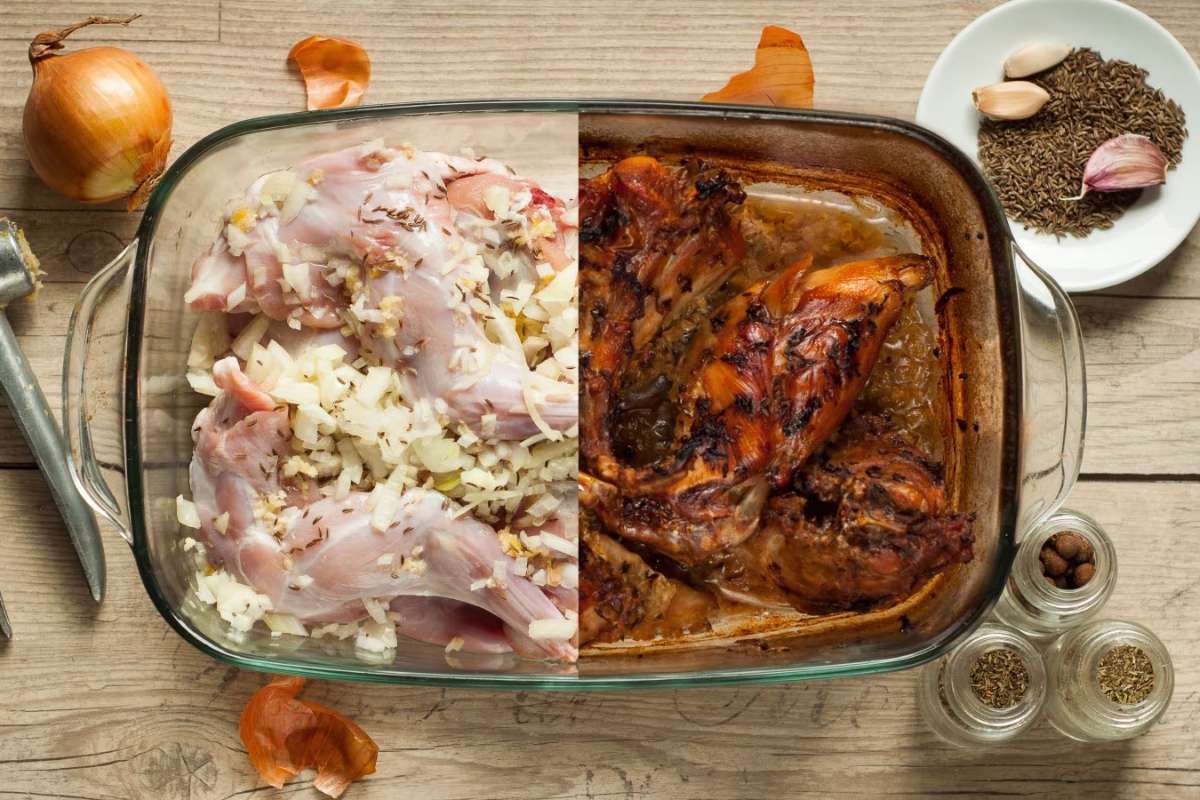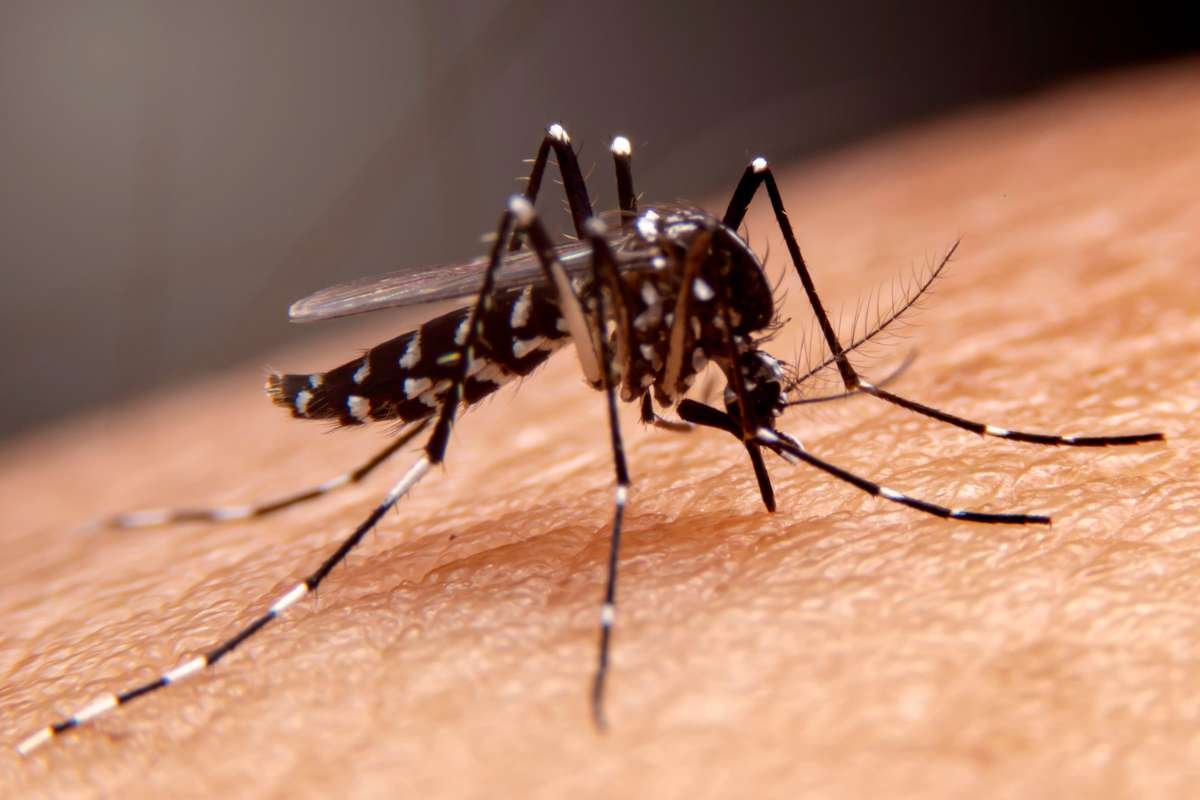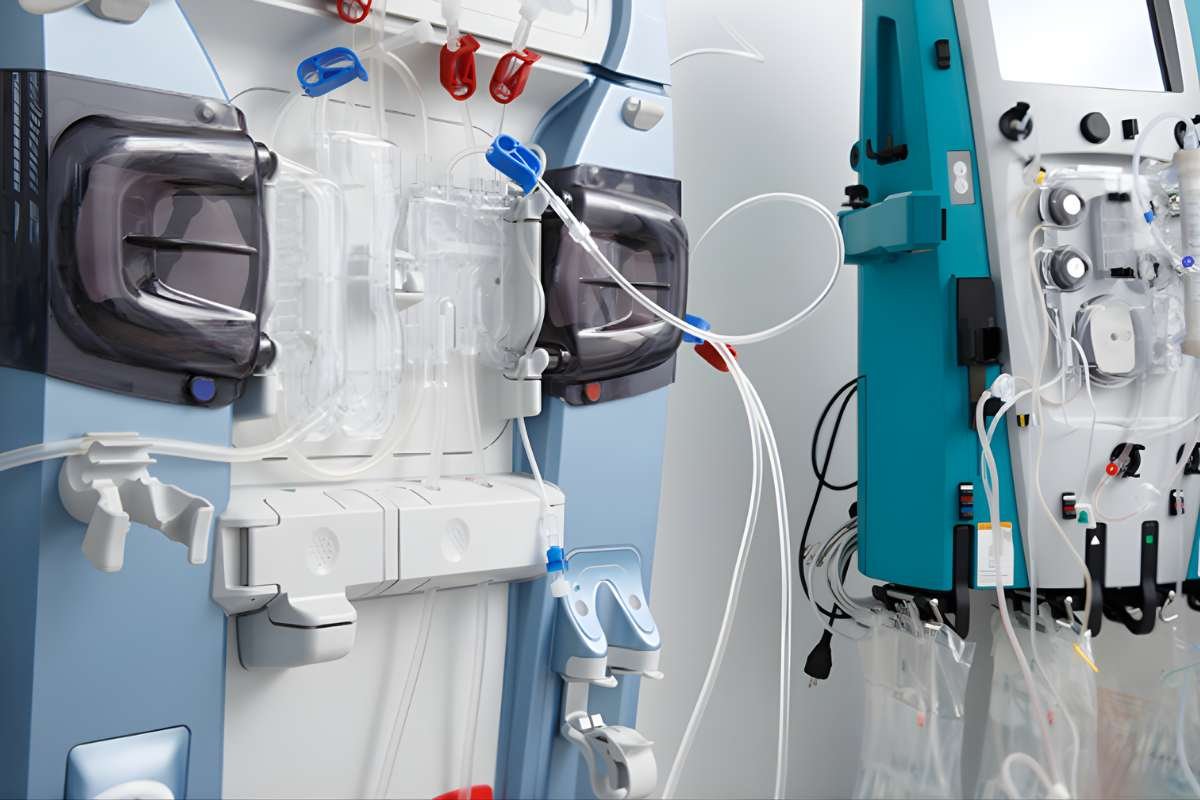Consider the crisp snap of an apple versus the tender warmth of a baked potato, the colorful tones of a fresh salad against the rich aroma of a boiling stew. Each brings its own unique appeal, offering different benefits to our bodies.
But what if one path held a hidden key to the finest health, while the other, though comforting and familiar, slightly hampered our potential? This interesting question about the “Raw Food vs Cooked Food” dispute. Let’s find out the answer to the mystery of this food war that has deep effects on our well-being.
It’s a debate as old as fire itself, burning passions and sparking countless discussions around dinner tables worldwide. Let’s investigate the science behind this culinary quarrel and explore which option is more beneficial for our health in the debate of Raw Food vs Cooked Food.
Understanding Raw Food vs Cooked Food
Both Raw and cooked food offer their own set of benefits and drawbacks. To choose which is better is often dependent on your individual needs and preferences. Raw food can be higher in certain vitamins and enzymes, while cooked food is generally easier to digest and can improve the bioavailability of some nutrients.
Consuming some foods raw, like fruits and vegetables, may offer more nutrients than cooked food. But this isn’t true for all foods. Some raw foods may increase your risk of foodborne illness compared to cooked food.
Let’s understand more about the health Benefits and risks of Raw Food vs Cooked Food:

Raw Food
Pros:
- Nutrient Retention: Raw foods, particularly fruits and vegetables, can retain more water-soluble vitamins like Vitamin C and enzymes that aid digestion.
- Enzyme Content: Raw foods have enzymes that can assist in breaking down nutrients, possibly making digestion easier.
- Phytochemicals: Raw foods may hold a higher concentration of beneficial phytochemicals and antioxidants.
Cons:
- Digestive Challenges: Some individuals may find raw foods harder to digest, especially those high in fiber or certain indigestible compounds.
- Risk of Pathogens: Raw foods, particularly animal products like meat, eggs, and dairy. Some vegetables, like sprouts, can carry harmful bacteria like Salmonella or E. coli, potentially leading to foodborne illness.
Cooked Food
Pros:
- Increased Digestibility: Cooking can break down cell walls and soften tough fibers, making foods easier to digest and absorb nutrients.
- Reduced Pathogens: Cooking effectively kills bacteria and parasites, reducing the risk of foodborne illnesses.
- Enhanced Nutrient Bioavailability: Cooking can make certain nutrients, like lycopene in tomatoes and beta-carotene in carrots, more readily available to the body.
Cons:
- Nutrient Loss: Cooking can reduce some heat-sensitive vitamins and minerals, particularly water-soluble vitamins like Vitamin C.
- Formation of Harmful Compounds: High-temperature cooking can create potentially harmful compounds in some foods.
| Parameter | Raw Food | Cooked Food |
| Definition | Food consumed in its natural, uncooked state | Food that has been heated through boiling, baking, frying, or steaming |
| Nutrient Retention | Retains heat-sensitive nutrients like Vitamin C and enzymes | May destroy certain vitamins (e.g., B-vitamins, Vitamin C) due to heat |
| Digestibility | Harder to digest; enzymes may help, but fibers remain intact | Easier to digest as heat breaks down fibers and tough cell walls |
| Flavor Profile | Often milder, more natural taste | Richer, deeper flavors due to caramelization, Maillard reaction, etc. |
| Pathogen Risk | Higher risk of foodborne illnesses if not washed or handled properly | Lower risk as cooking kills most harmful bacteria and parasites |
| Enzyme Content | High in natural enzymes that aid digestion | Most natural enzymes are destroyed by heat |
| Energy Usage | No energy or fuel required for preparation | Requires gas, electricity, or other fuel sources for cooking |
| Shelf Life | Shorter shelf life; spoils quickly | Longer shelf life due to heat-based preservation |
| Satiety | May be less filling due to high water content | Often more satiating due to changes in texture and calorie concentration |
| Popular in Diets | Raw vegan, raw vegetarian, detox diets | Balanced, traditional, high-protein, paleo, Mediterranean diets |
Raw Food vs Cooked Food: To cook or not to cook
Impact on Gut Health:
Your gut is home to trillions of microbes, and what you eat, regardless of raw or cooked, directly shapes this microbial world.
Developing research shows that cooking doesn’t just change the texture or taste of food, but it actually transforms how your gut bacteria respond.
A study copying human gut reactions to five common foods found that both cooking and how intensely you cook can considerably impact your gut microbiome.
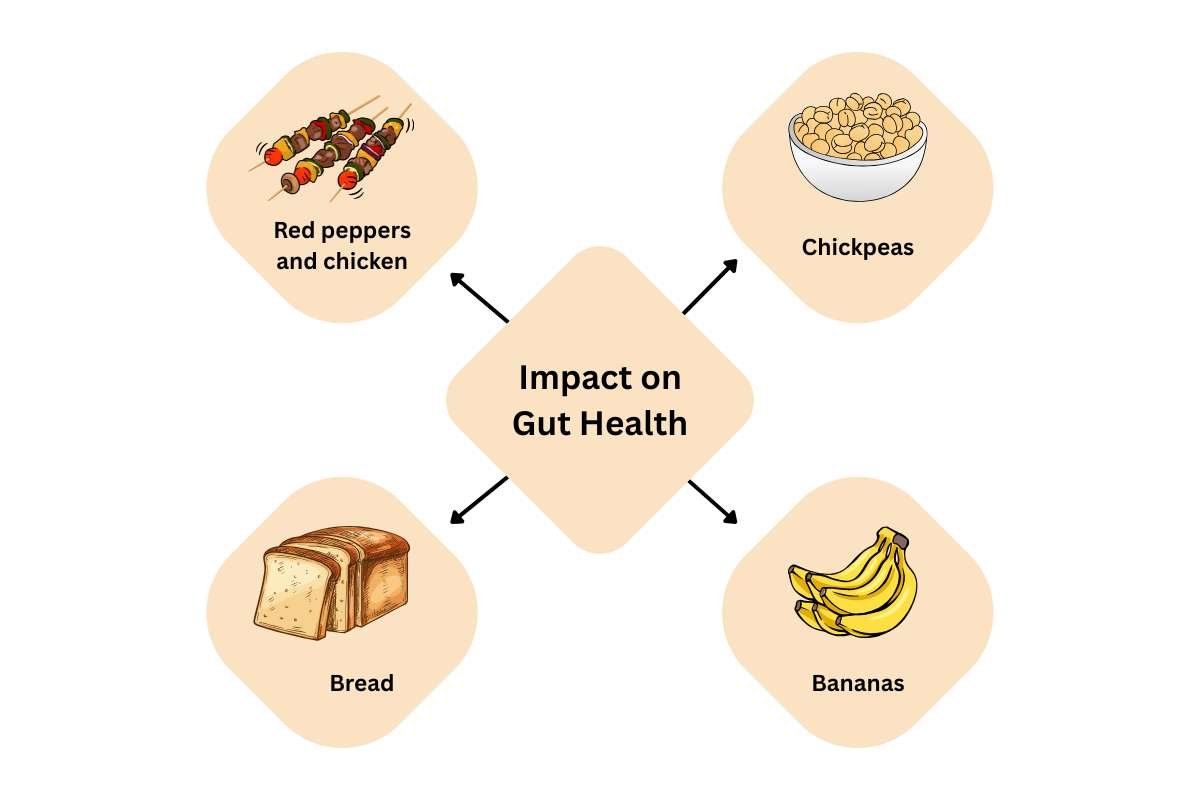
- Red peppers and chicken: Roasting or grilling increased levels of beneficial bacteria like Bifidobacteria and Ruminococcus, more than boiling.
- Chickpeas: Boiling improved some gut-friendly microbes, but grilling sparked a boost in butyrate, a key compound that strengthens the gut barrier.
- Bread: Raw, unbaked dough surprisingly led to more butyrate than toasted versions.
- Bananas: Raw is great, but roasting or frying them can also boost butyrate levels. Plus, it makes for a tasty gut-friendly treat.
Case Study Raw Food vs Cooked Food—Nutrient Retention & Health Implications:
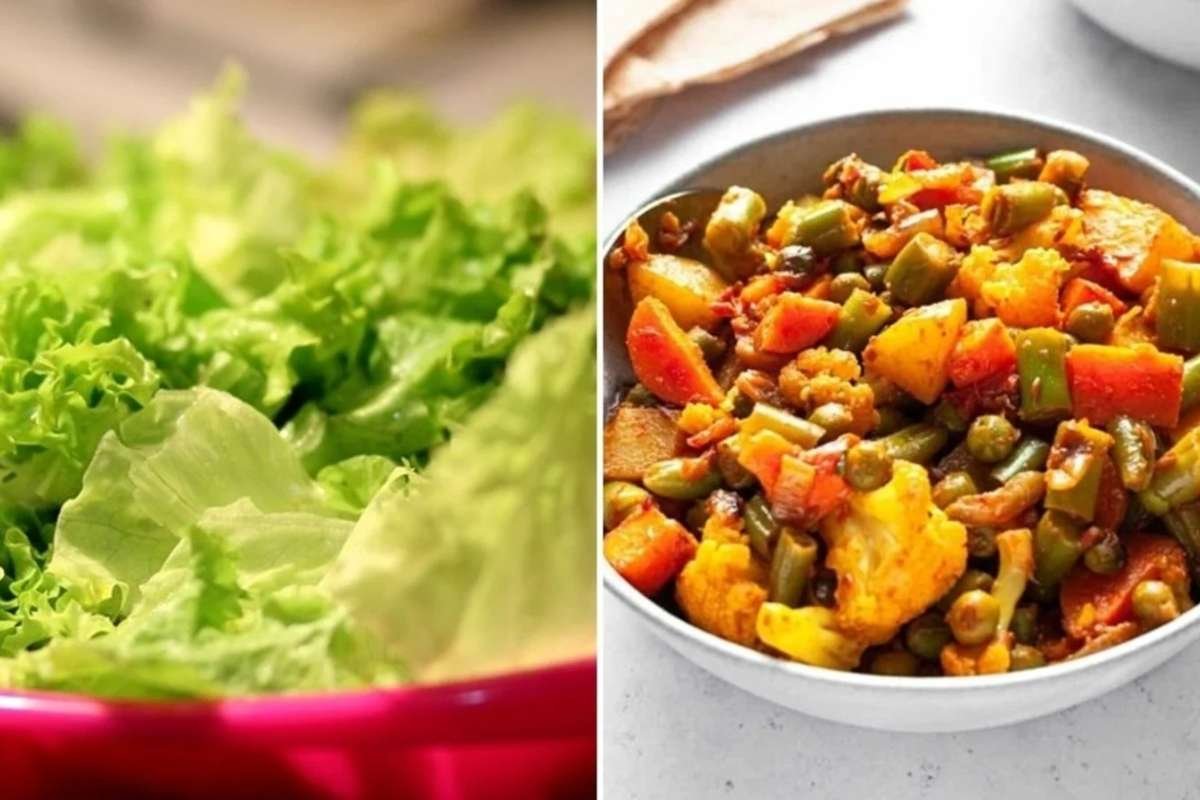
A 2017 Korean study studied how different cooking methods, such as boiling, blanching, steaming, and microwaving, affected vitamin retention in ten commonly eaten vegetables. Here’s what they found:
- Water-soluble vitamins like vitamin C are highly sensitive to heat and water. Boiling often resulted in significant losses down to near 0% retention, whereas microwaving and steaming retained much more.
- Fat-soluble nutrients (β-carotene, vitamins E and K) sometimes increase in cooked veggies compared to raw, likely because heat breaks down plant cell structures, making these nutrients more extractable.
Similar Article:
- Can You Eat Mushroom Raw? The Answer Might Surprise you!
- 5 Easy Ways to Tell If Your Raw Chicken is Bad
These findings are key when evaluating raw versus cooked food:
- Raw veggies preserve delicate water-soluble vitamins but may lock up fat-soluble ones.
- Gentle cooking like steaming or microwaving improves absorption of carotenoids and vitamins E/K while still keeping vitamin C losses to a minimum.
- Boiling, on the other hand, leads to the greatest nutrient loss, especially for water-soluble vitamins.
Source: https://pmc.ncbi.nlm.nih.gov/articles/PMC8356072/
Conclusion
At the end of the day, the point of Raw Food vs Cooked Food isn’t to say one is superior to the other. Each option has its unique benefits and possible drawbacks regarding our health, gut microbiome, and nutrient absorption.
The key insight here is that a balanced, varied diet that combines both raw and cooked elements, and how cooking is performed is consciously considered, is the best way to help the body optimize health.
If we can adopt a mindset that is adaptable and flexible, while listening to our body, we can take full advantage of our food, whether it is cooked, flashed with fire, or enjoyed unadulterated.
FAQs:
1. Which is better, cooked or raw food?
This is because cooked food is easier to digest and provides more energy than raw food. Cooking also reduces the risk of contamination and foodborne illnesses.
2. Is it better to digest raw food or cooked food?
Cooked food is generally easier to digest than raw food. Cooking helps break down the cell walls of plant foods, making nutrients more accessible and easier for the body to absorb. It also denatures proteins and softens fibers, which can facilitate digestion.
3. What is the difference between raw food and processed food?
Processed foods are foods that are no longer in their natural state, because they have either been cooked or combined with other food ingredients. For example, a raw, whole apple is a food in its natural state. However, applesauce, which is made by cooking the apple, is a processed food.

